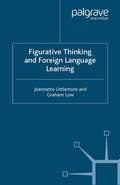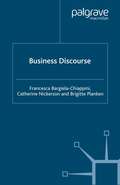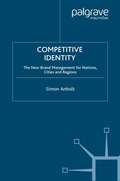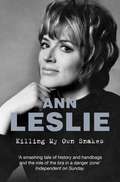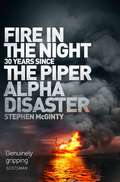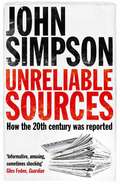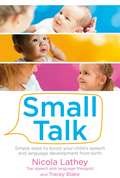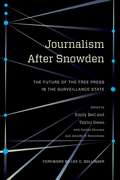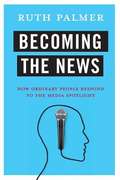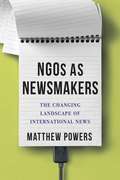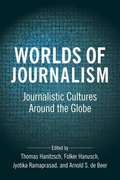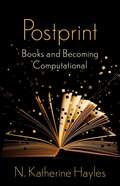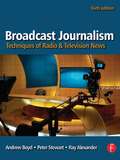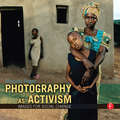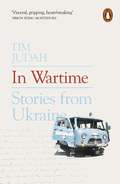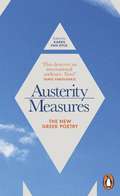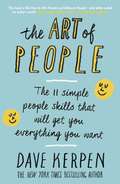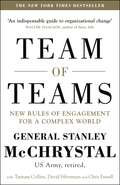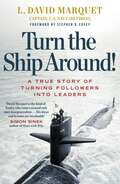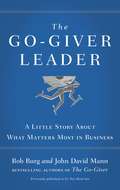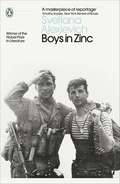- Table View
- List View
Figurative Thinking and Foreign Language Learning
by J. Littlemore Graham D. LowMany vocabulary items that foreign language learners encounter involve figurative extensions of meaning. To understand figurative speech, learners often need to employ figurative thinking. This book examines figurative thinking, considers its contribution to language ability, and explores the implications for language teaching and learning.
Business Discourse (Research and Practice in Applied Linguistics)
by Francesca Bargiela-Chiappini Catherine Nickerson B. PlankenBusiness Discourse introduces a multidisciplinary approach to the research and practice of business communication. It promotes debate and enquiry on several new and competing issues and combines teaching practice, state-of-the-art research and innovative practical applications.
Competitive Identity: The New Brand Management for Nations, Cities and Regions
by Simon AnholtEver since Simon Anholt coined the phrase 'Nation Branding, there has been more and more interest in the idea that countries, cities and regions can build their brand images. This authoritative book considers how commercial brand management can really be applied to places and shows how places can build and sustain their competitive identity.
Killing My Own Snakes: A Memoir
by Ann LeslieShe has been shot at by Bosnian snipers, been pursued by Robert Mugabe’s notorious secret police, filed from the North Korean border, propositioned by both Salvador Dali and David Niven and been driven maniacally through London by Steve McQueen. But Ann Leslie’s life is every bit as remarkable as her career. A daughter of the Raj, she was born in India and the strongest influence on her early life was an illiterate Pashtun bearer, who saved her life during Partition. Her mother, a great beauty, was indifferent to her eldest daughter and she was sent to the first of a series of boarding-schools aged just four, eventually winning a scholarship to Oxford. After graduating she began her career at the Manchester office of the Daily Express, where the news editor took an instant dislike to her - she was a southerner, educated and – worst of all – female. Despite his best efforts she was soon given her own column. Then, after a stint covering show business she was appointed Foreign Correspondent of the Daily Mail, an association that endures today, almost forty years later, and one which finally allowed her real talent to shine through. Killing My Own Snakes is a witty, incident-filled account of an extraordinary life, a fascinating self-portrait of one the most influential journalists of our time.
Fire in the Night: The Piper Alpha Disaster
by Stephen McGintyThe fire was visible from seventy miles away and the heat generated was so intense that a helicopter could only circle the rig at a perimeter of one mile. On the surface of the sea, a converted fishing trawler inched as close as possible, but the paint on the vessel’s hull blistered and burnt. In the water surrounding the inferno, men’s heads could be seen bobbing like apples as their yellow hard hats melted with the heat.On 6 July 1988 a series of explosions ripped through the Piper Alpha oil platform, 110 miles north-east of Aberdeen in the North Sea. Ablaze with 226 men on board, the searing temperatures caused the platform to collapse in just two hours. Only sixty-one would survive by leaping over 100 feet into the water below.Newly updated for the thirtieth year since the tragedy, Fire in the Night by journalist Stephen McGinty tells in gripping detail the devastating story of that summer evening. Combining interviews with survivors, witness statements and transcripts from the official inquiry into the disaster, this is the moving and vivid tale of what remains the worst offshore oil-rig disaster to date.
Unreliable Sources: How the Twentieth Century was Reported
by John SimpsonThrough many decades of groundbreaking journalism, John Simpson has become not only one of the most recognisable and trusted British personalities, but has transferred his skill to books with multiple bestselling success. With his new book he turns his eye to how Great Britain has been transformed by its free press down the years. He shows how, while the press likes to pretend it's independent, they have enjoyed the power they have over the events they report and have at times exercised it irresponsibly. He examines how it changed the world and changed itself over the course of the last hundred years, from the creation of the Daily Mail and the first stokings of anti-German sentiment in the years leading up to the First World War, to the Sun's propping up of the Thatcher government, and beyond. In this self-analysis from one of the pillars of modern journalism some searching questions are asked, including whether the press can ever be truly free and whether we would desire it to be so. Always incisive, brilliantly readable and never shy of controversy, Lies Like Truth sees John Simpson at the height of his game as one of Britain's foremost commentators.
Small Talk: Simple ways to boost your child's speech and language development from birth
by Nicola Lathey Tracey BlakeThis book will help you encourage and stimulate the natural stages of language development in the crucial early years. Featuring lots of practical ‘Small Talk Time’ ideas – quick, fun language games to play with your baby, toddler and preschooler – you will feel confident you know what to do to enhance your child’s communication from birth to help them reach their potential and give them the best head start for lifelong learning. After all, a parent is a child’s best teacher. Find out: * The one single technique you must adopt to make the most significant impact on your child’s language ability * The truth about dummies, tongue tie, dribbling, why bottles are so bad after 12 months, baby signing and whether TV hinders your child’s language development * About causes for concern and where to turn for help
Manly States: Masculinities, International Relations, and Gender Politics (PDF)
by Charlotte HooperMuch has been written on how masculinity shapes international relations, but little feminist scholarship has focused on how international relations shape masculinity. Charlotte Hooper draws from feminist theory to provide an account of the relationship between masculinity and power. She explores how the theory and practice of international relations produces and sustains masculine identities and masculine rivalries. This volume asserts that international politics shapes multiple masculinities rather than one static masculinity, positing an interplay between a "hegemonic masculinity" (associated with elite, western male power) and other subordinated, feminized masculinities (typically associated with poor men, non-western men, men of colour, and/or gay men). Employing feminist analyses to confront gender-biased stereotyping in various fields of international political theory - including academic scholarship, journals, and popular literature like The Economist - Hooper reconstructs the nexus of international relations and gender politics during this age of globalization.
Journalism After Snowden (PDF)
by Emily Bell Taylor Owen Smitha Khorana Jennifer R. HenrichsenEdward Snowden's release of classified NSA documents exposed the widespread government practice of mass surveillance in a democratic society. The publication of these documents, facilitated by three journalists, as well as efforts to criminalize the act of being a whistleblower or source, signaled a new era in the coverage of national security reporting. The contributors to Journalism After Snowden analyze the implications of the Snowden affair for journalism and the future role of the profession as a watchdog for the public good. Integrating discussions of media, law, surveillance, technology, and national security, the book offers a timely and much-needed assessment of the promises and perils for journalism in the digital age. Journalism After Snowden is essential reading for citizens, journalists, and academics in search of perspective on the need for and threats to investigative journalism in an age of heightened surveillance. The book features contributions from key players involved in the reporting of leaks of classified information by Edward Snowden, including Alan Rusbridger, former editor-in-chief of The Guardian; ex-New York Times executive editor Jill Abramson; legal scholar and journalist Glenn Greenwald; and Snowden himself. Other contributors include dean of Columbia Graduate School of Journalism Steve Coll, Internet and society scholar Clay Shirky, legal scholar Cass Sunstein, and journalist Julia Angwin. Topics discussed include protecting sources, digital security practices, the legal rights of journalists, access to classified data, interpreting journalistic privilege in the digital age, and understanding the impact of the Internet and telecommunications policy on journalism. The anthology's interdisciplinary nature provides a comprehensive overview and understanding of how society can protect the press and ensure the free flow of information.
Becoming the News (PDF)
by Ruth PalmerWhat does it feel like to be featured, quoted, or just named in a news story? A refugee family, the survivor of a shooting, a primary voter in Iowa-the views and experiences of ordinary people are an important component of journalism. While much has been written about how journalists work and gather stories, what do we discover about the practice of journalism and attitudes about the media by focusing on the experiences of the subjects themselves? In Becoming the News, Ruth Palmer argues that understanding the motivations and experiences of those who have been featured in news stories-voluntarily or not-sheds new light on the practice of journalism and the importance many continue to place on the role of the mainstream media. Based on dozens of interviews with news subjects, Becoming the News studies how ordinary people make sense of their experience as media subjects. Palmer charts the arc of the experience of "making" the news, from the events that brought an ordinary person to journalists' attention through the decision to cooperate with reporters, interactions with journalists, and reactions to the news coverage and its aftermath.
NGOs as Newsmakers: The Changing Landscape Of International News (Reuters Institute Global Journalism Ser. (PDF))
by Matthew PowersAs traditional news outlets' international coverage has waned, several prominent nongovernmental organizations have taken on a growing number of seemingly journalistic functions. Groups such as Amnesty International, Human Rights Watch, and M decins Sans Fronti res send reporters to gather information and provide analysis and assign photographers and videographers to boost the visibility of their work. Digital technologies and social media have increased the potential for NGOs to communicate directly with the public, bypassing traditional gatekeepers. But have these efforts changed and expanded traditional news practices and coverage--and are there consequences to blurring the lines between reporting and advocacy? In NGOs as Newsmakers, Matthew Powers analyzes the growing role NGOs play in shaping--and sometimes directly producing--international news. Drawing on interviews, observations, and content analysis, he charts the dramatic growth in NGO news-making efforts, examines whether these efforts increase the organizations' chances of garnering news coverage, and analyzes the effects of digital technologies on publicity strategies. Although the contemporary media environment offers NGOs greater opportunities to shape the news, Powers finds, it also subjects them to news-media norms. While advocacy groups can and do provide coverage of otherwise ignored places and topics, they are still dependent on traditional media and political elites and influenced by the expectations of donors, officials, journalists, and NGOs themselves. Through an unprecedented glimpse into NGOs' newsmaking efforts, Powers portrays the possibilities and limits of NGOs as newsmakers amid the transformations of international news, with important implications for the intersections of journalism and advocacy.
Worlds of Journalism: Journalistic Cultures Around the Globe (PDF)
by Thomas Hanitzsch Folker Hanusch Jyotika Ramaprasad Arnold BeerHow do journalists around the world view their roles and responsibilities in society? Based on a landmark study that has collected data from more than 27,500 journalists in 67 countries, Worlds of Journalism offers a groundbreaking analysis of the different ways journalists perceive their duties, their relationship to society and government, and the nature and meaning of their work. Challenging assumptions of a universal definition or concept of journalism, the book maps a world populated by a rich diversity of journalistic cultures. Organized around a series of key questions on topics such as editorial autonomy, journalistic ethics, trust in social institutions, and changes in the profession, it details how the practice of journalism differs across the world in a range of political, social, and economic contexts. The book covers how journalism as an institution is created and re-created by journalists and how they experience their profession in very different ways, even as they retain a commitment to some basic, widely shared professional norms and practices. It concludes with a global classification of journalistic cultures that reflects the breadth of worldviews and orientations found in disparate countries and regions. Worlds of Journalism offers an ambitious, comparative global understanding of the state of journalism in a time when it is confronting a series of economic and political threats.
Worlds Of Journalism: Journalistic Cultures Around The Globe (PDF)
by Thomas Hanitzsch Folker Hanusch Jyotika Ramaprasad Arnold BeerHow do journalists around the world view their roles and responsibilities in society? Based on a landmark study that has collected data from more than 27,500 journalists in 67 countries, Worlds of Journalism offers a groundbreaking analysis of the different ways journalists perceive their duties, their relationship to society and government, and the nature and meaning of their work. Challenging assumptions of a universal definition or concept of journalism, the book maps a world populated by a rich diversity of journalistic cultures. Organized around a series of key questions on topics such as editorial autonomy, journalistic ethics, trust in social institutions, and changes in the profession, it details how the practice of journalism differs across the world in a range of political, social, and economic contexts. The book covers how journalism as an institution is created and re-created by journalists and how they experience their profession in very different ways, even as they retain a commitment to some basic, widely shared professional norms and practices. It concludes with a global classification of journalistic cultures that reflects the breadth of worldviews and orientations found in disparate countries and regions. Worlds of Journalism offers an ambitious, comparative global understanding of the state of journalism in a time when it is confronting a series of economic and political threats.
Postprint: Books And Becoming Computational (pdf) (Wellek Library Lectures)
by N. Katherine HaylesSince Gutenberg’s time, every aspect of print has gradually changed. But the advent of computational media has exponentially increased the pace, transforming how books are composed, designed, edited, typeset, distributed, sold, and read. N. Katherine Hayles traces the emergence of what she identifies as the postprint condition, exploring how the interweaving of print and digital technologies has changed not only books but also language, authorship, and what it means to be human. Hayles considers the ways in which print has been enmeshed in literate societies and how these are changing as some of the cognitive tasks once performed exclusively by humans are now carried out by computational media. Interpretations and meaning-making practices circulate through transindividual collectivities created by interconnections between humans and computational media, which Hayles calls cognitive assemblages. Her theoretical framework conceptualizes innovations in print technology as redistributions of cognitive capabilities between humans and machines. Humanity is becoming computational, just as computational systems are edging toward processes once thought of as distinctively human. Books in all their diversity are also in the process of becoming computational, representing a crucial site of ongoing cognitive transformations. Hayles details the consequences for the humanities through interviews with scholars and university press professionals and considers the cultural implications in readings of two novels, The Silent History and The Word Exchange, that explore the postprint condition. Spanning fields including book studies, cultural theory, and media archeology, Postprint is a strikingly original consideration of the role of computational media in the ongoing evolution of humanity.
Broadcast Journalism: Techniques of Radio and Television News (6th edition) (PDF)
by Andrew Boyd Peter Stewart Ray AlexanderThis newest edition of Broadcast Journalism continues its long tradition of covering the basics of broadcasting from gathering news sources, interviewing, putting together a programme, news writing, reporting, editing, working in the studio, conducting live reports, and more. Two new authors have joined forces in this new edition to present behind the scenes perspectives on multimedia broadcast news, where it is heading, and how you get there.
Broadcast Journalism Techniques of Radio and Television News (6th edition)
by Andrew Boyd Peter Stewart Ray AlexanderThis newest edition of Broadcast Journalismcontinues its long tradition of covering the basics of broadcasting from gathering news sources, interviewing, putting together a programme, news writing, reporting, editing, working in the studio, conducting live reports, and more. Two new authors have joined forces in this new edition to present behind the scenes perspectives on multimedia broadcast news, where it is heading, and how you get there. Technology is meshing global and local news. Constant interactivity between on-the-scene reporting and nearly instantaneous broadcasting to the world has changed the very nature of how broadcast journalists must think, act, write and report on a 24/7 basis. This new edition takes up this digital workflow and convergence. Students of broadcast journalism and professors alike will find that the sixth edition of Broadcast Journalism is completely up-to-date. Includes new photos, quotations, and coverage of convergent journalism, podcasting, multimedia journalism, citizen journalism, and more! 9780080569192 9781138170674
Photography as Activism: Images for Social Change
by Michelle BogreYou want to look through the lens of your camera and change the world. You want to capture powerful moments in one click that will impact the minds of other people. Photographic images are one of the most popular tools used to advocate for social and environmental awareness. This can be as close to home as drug use, prostitution, or pollution or as far away as famine, war, and the plight of refugees and migrant workers. One well-known example of an activist photographer would be landscape photographer Ansel Adams, who trudged to Washington with stunning images of the American west to advocate protecting these areas. His images and testimony were instrumental in creating the National Park System and garnering specific protection for Yellowstone National Park. More recently Robert Glenn Ketchum's images of Alaska's Arctic National Wildlife Refuge raised awareness of why this area should be protected. Nigel Barker's seal photographs advocates against seal clubbing. What is your cause and how can you use your camera to make the world a better place? This book provides a comprehensive theory of, and history of, photography as activism. It also includes interviews with contemporary photographers. It is a call to action for young photographers to become activists, a primer of sorts, with advice for how to work with NGOs and non-profits, how to work safely in conflict zones and with suggestions for distribution on websites, blogs, and interactive agencies.
Photography as Activism: Images for Social Change (PDF)
by Michelle BogreYou want to look through the lens of your camera and change the world. You want to capture powerful moments in one click that will impact the minds of other people. Photographic images are one of the most popular tools used to advocate for social and environmental awareness. This can be as close to home as drug use, prostitution, or pollution or as far away as famine, war, and the plight of refugees and migrant workers. One well-known example of an activist photographer would be landscape photographer Ansel Adams, who trudged to Washington with stunning images of the American west to advocate protecting these areas. His images and testimony were instrumental in creating the National Park System and garnering specific protection for Yellowstone National Park. More recently Robert Glenn Ketchum's images of Alaska's Arctic National Wildlife Refuge raised awareness of why this area should be protected. Nigel Barker's seal photographs advocates against seal clubbing. What is your cause and how can you use your camera to make the world a better place? This book provides a comprehensive theory of, and history of, photography as activism. It also includes interviews with contemporary photographers. It is a call to action for young photographers to become activists, a primer of sorts, with advice for how to work with NGOs and non-profits, how to work safely in conflict zones and with suggestions for distribution on websites, blogs, and interactive agencies.
In Wartime: Stories from Ukraine
by Tim JudahUrgent and insightful, Tim Judah's account of the human side of the conflict in Ukraine is an evocative exploration of what the second largest country in Europe feels like in wartime.Making his way from the Polish border in the west, through the capital city and the heart of the 2014 revolution, to the eastern frontline near the Russian border, seasoned war reporter Tim Judah brings a rare glimpse of the reality behind the headlines. Along the way he talks to the people living through the conflict - mothers, soldiers, businessmen, poets, politicians - whose memories of a contested past shape their attitudes, allegiances and hopes for the future. Together, their stories paint a vivid picture of a nation trapped between powerful forces, both political and historical.'Visceral, gripping, heartbreaking' Simon Sebag Montefiore
Austerity Measures: The New Greek Poetry (Nyrb Poets Ser.)
by Karen Van Dyck'I remember caresses, kisses, touchingeach other's hair. We had no sense thatanything else existed'- Elena Penga, 'Heads''Nothing, not even the drowning of a childStops the perpetual motion of the world'- Stamatis Polenakis, 'Elegy'Since the crisis hit in 2008, Greece has played host to a cultural renaissance unlike anything seen in the country for over thirty years. Poems of startling depth and originality are being written by native Greeks, émigrés and migrants alike. They grapple with the personal and the political; with the small revelations of gardening and the viciousness of streetfights; with bodies, love, myth, migration and economic crisis.In Austerity Measures, the very best of the writing to emerge from that creative ferment - much of it never before translated into English - is gathered for the first time. The result is a map to the complex territory of a still-evolving scene - and a unique window onto the lived experience of Greek society now.
The Art of People: The 11 Simple People Skills That Will Get You Everything You Want
by Dave KerpenWhat does it take to win success and influence? In a world where we are constantly connected, it's those with the best people skills who win the day. Those who build the right relationships. Those who truly understand and connect with their colleagues, their customers, their partners. Those who others like, respect and trust.The Art of People reveals the eleven people skills that will get you more of what you want at work, at home and in life. Accessible, easy to execute and often counter-intuitive, these include:- The single most important question you can ever ask to win attention in a meeting- Why it usually pays to be the one to give the bad news- How to get everyone to want to be around you, with one word No matter who you are or what profession you're in, The Art of People will show you how to charm and win over anyone. 'This book is like How to Win Friends and Influence People - only better suited for today's world' - ADAM GRANT, author of Give and Take and Originals'People skills can't be computerized, outsourced, or reduced to a rubric. That's why The Art of People is more important now than ever - it will teach you a set of irreplaceable skills that will help you in every area of your life' - DANIEL H. PINK, author of To Sell Is Human and Drive
Team of Teams: New Rules of Engagement for a Complex World
by David Silverman Chris Fussell Tantum Collins General Stanley McChrystalWhat if you could combine the agility, adaptability, and cohesion of a small team with the power and resources of a giant organization?When General Stanley McChrystal took command of the Joint Special Operations Task Force in Iraq in 2003, he quickly realized that conventional military tactics were failing. The allied forces had a huge advantage in numbers, equipment and training - but none of the enemy's speed and flexibility.McChrystal and his colleagues discarded a century of conventional wisdom to create a 'team of teams' that combined extremely transparent communication with decentralized decision-making authority. Faster, flatter and more flexible, the task force beat back al-Qaeda.In this powerful book, McChrystal and his colleagues show how the challenges they faced in Iraq can be relevant to any leader. Through compelling examples, the authors demonstrate that the 'team of teams' strategy has worked everywhere from hospital emergency rooms to NASA and has the potential to transform organizations large and small.'A bold argument that leaders can help teams become greater than the sum of their parts' Charles Duhigg, author of The Power of Habit'An indispensable guide to organizational change' Walter Isaacson, author of Steve Jobs
Turn The Ship Around!: A True Story of Building Leaders by Breaking the Rules
by L. David Marquet'David Marquet is the kind of leader who comes around only once in a generation ... his ideas and lessons are invaluable' Simon Sinek, author of Start With WhyCaptain David Marquet was used to giving orders. In the high-stress environment of the USS Santa Fe, a nuclear-powered submarine, it was crucial his men did their job well. But the ship was dogged by poor morale, poor performance and the worst retention in the fleet. One day, Marquet unknowingly gave an impossible order, and his crew tried to follow it anyway. He realized he was leading in a culture of followers, and they were all in danger unless they fundamentally changed the way they did things. Marquet took matters into his own hands and pushed for leadership at every level. Before long, his crew became fully engaged and the Santa Fe skyrocketed from worst t first in the fleet. No matter your business or position, you can apply Marquet's approach to create a workplace where everyone takes responsibility for their actions, people are healthier and happier - and everyone is a leader.
The Go-Giver Leader: A Little Story About What Matters Most in Business
by John David Mann Bob BurgThe classic companion to the international bestseller The Go-Giver 'Share this book with those you care about' Seth Godin'A manifesto for twenty-first-century leadership packaged in a fun and engaging story. Buy this book and get it in the hands of everyone in your company' Darren Hardy, Success MagazineBen is an ambitious young executive charged with persuading 500 employee shareholders to agree to a merger that will save their company. But despite his best efforts, he can't convince anyone to buy in to the deal.During his week at the company, Ben realizes that his aggressive style is actually making it harder to reach his goals. Will Ben find a way to sway the shareholders before the climactic vote? The answer may surprise you, as you follow Ben on his journey to understanding that the path to genuine influence lies less in taking leadership than in giving it.PLEASE NOTE: This book was previously published under the titleIt's Not About You.
Boys in Zinc (Penguin Modern Classics)
by Andrew Bromfield Svetlana AlexievichThe haunting history of the Soviet-Afghan War from the winner of the Nobel Prize in Literature 2015- A new translation based on the updated text - From 1979 to 1989 Soviet troops engaged in a devastating war in Afghanistan that claimed thousands of casualties on both sides. While the Soviet Union talked about a 'peace-keeping' mission, the dead were shipped back in sealed zinc coffins. Boys in Zinc presents the honest testimonies of soldiers, doctors and nurses, mothers, wives and siblings who describe the lasting effects of war. Weaving together their stories, Svetlana Alexievich shows us the truth of the Soviet-Afghan conflict: the killing and the beauty of small everyday moments, the shame of returned veterans, the worries of all those left behind. When it was first published in the USSR in 1991, Boys in Zinc sparked huge controversy for its unflinching, harrowing insight into the realities of war.
